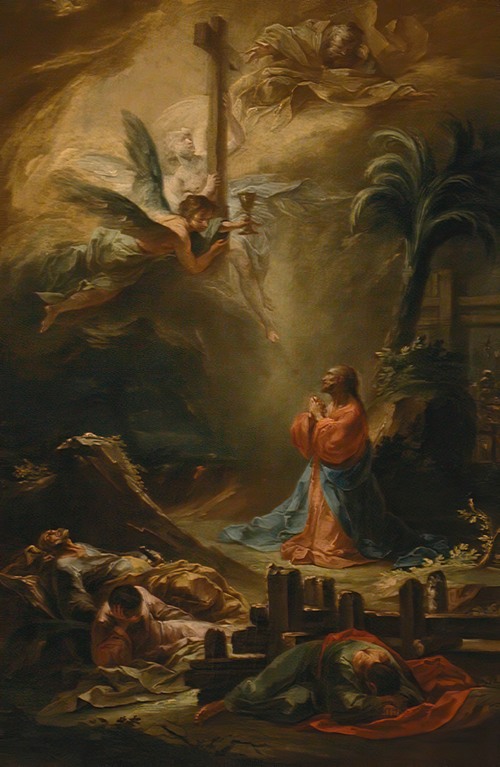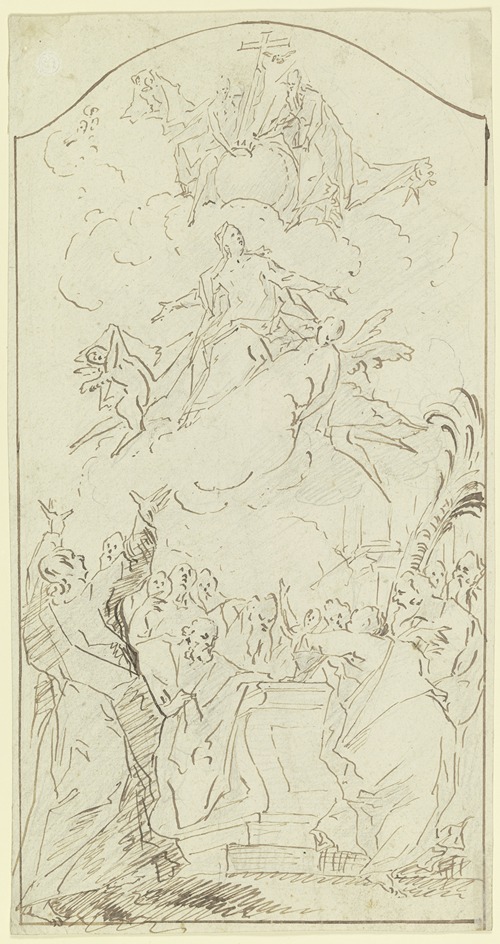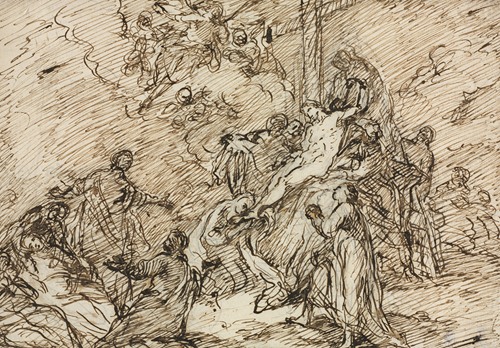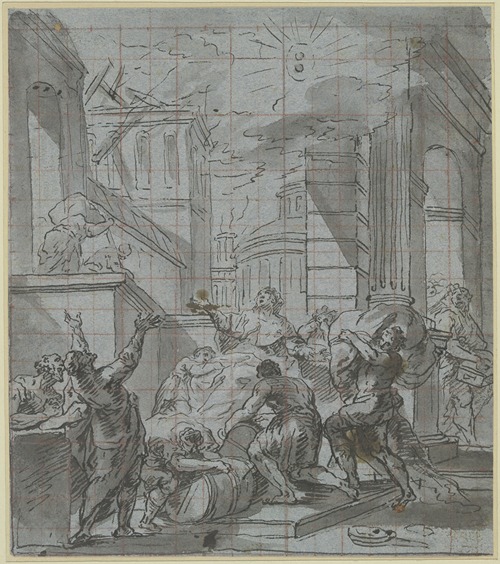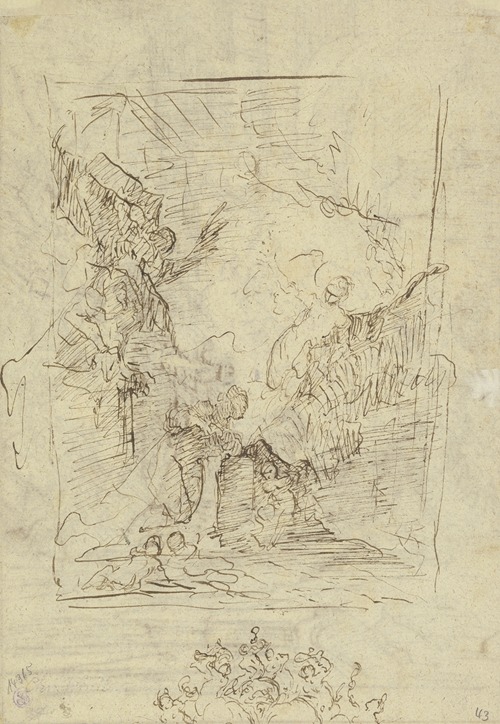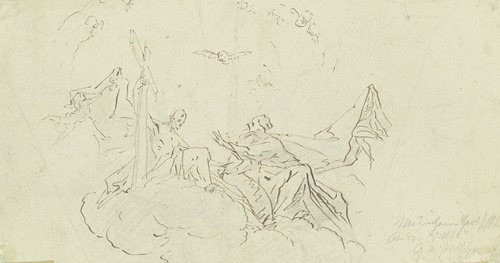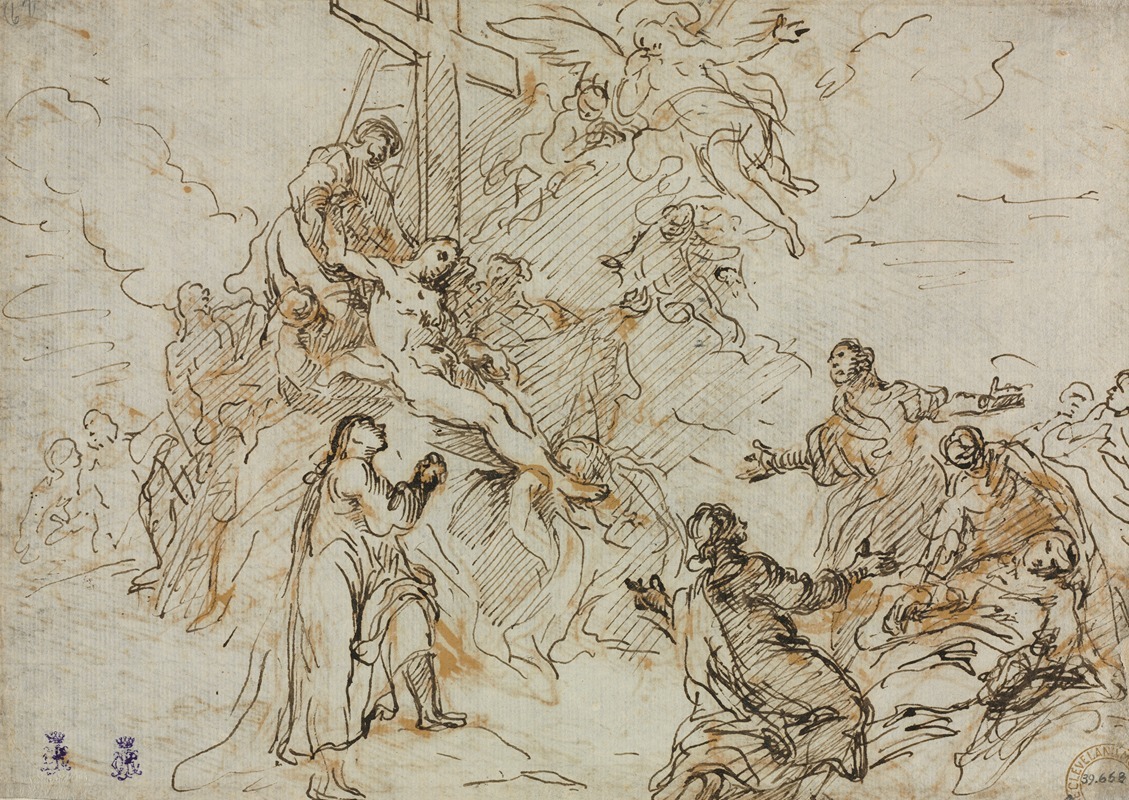
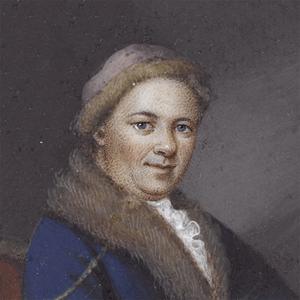
Johann Christian Thomas Wink was a late Rococo painter, fresco artist and etcher. After his appointment as court painter to the elector (1769), he signed important commissioned works with “Bayerischer Hofmaler” (“Aulae Boicae Pictor”).
Christian Wink grew up as the son of the prince-bishop's corporal Augustin Wink and his wife Walburga in the Bishopric of Eichstätt. He is the younger brother of Johann Chrysostomus Wink, who helped him get an apprenticeship with Anton Scheidler in Eggenfelden, a fellow painter friend of his. After his apprenticeship, Christian Wink moved to the workshop of Johann Jakob Feichtmayer in Eichstätt. However, he only stayed there briefly before going to Augsburg. In the 18th century, the Fugger town was one of the most important art centers in the German-speaking world.
Presumably Wink attended the Imperial City Academy there between 1759 and 1760. After a short stay in Freising , he moved on to Munich, where he worked from 1760. Since 1765/1766 his work as a history painter for the local electoral court opera theater has been secured. In this function he made scenes based on designs by Giovanni Paolo Gaspari (1714-1780) and Lorenzo Quaglio (1730-1804). Just a few years later – in 1769 – Wink was appointed court painter to the Bavarian Elector . This title helped him to numerous, mostly ecclesiastical commissions within the Bavarian Electorate. Apart from numerous trips, he lived and worked in Munich until his death (1797). Wink was married to Elisabeth Schega, the daughter of the Bavarian court medalist Franz Andreas Schega (1711-1787).
His work includes numerous frescoes in Upper Bavarian and Swabian churches, in addition to those mentioned below also in Starnberg , Raisting , Ettringen and Kempfenhausen as well as the dining room of Schleißheim Palace . His oil paintings are less well known, but no less numerous. Wink was one of the most active painters in Munich in the second half of the 18th century.

